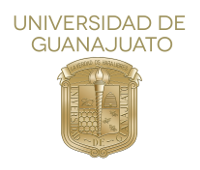Por favor, use este identificador para citar o enlazar este ítem:
http://repositorio.ugto.mx/handle/20.500.12059/13462Registro completo de metadatos
| Campo DC | Valor | Lengua/Idioma |
|---|---|---|
| dc.rights.license | http://creativecommons.org/licenses/by-nc-nd/4.0 | es_MX |
| dc.creator | Israel Jesus Orlando Guerrero | es_MX |
| dc.date.accessioned | 2025-03-06T21:26:47Z | - |
| dc.date.available | 2025-03-06T21:26:47Z | - |
| dc.date.issued | 2024-10-23 | - |
| dc.identifier.uri | http://repositorio.ugto.mx/handle/20.500.12059/13462 | - |
| dc.description.abstract | Las sondas empleadas en el aula para el aprendizaje de física permiten al alumno medir y desplegar variables en tiempo real. Su principal objetivo en la educación es unir la ciencia, la tecnología, la ingeniería y las matemáticas (STEM, por sus siglas en inglés), con el fin de mejorar el aprendizaje de los estudiantes. En esta investigación se presenta el diseño óptico y mecánico, así como el algoritmo de control, de una sonda empleada para el aprendizaje del concepto transmitancia de luz. La sonda consiste en un espectrofotómetro de un solo haz y una cámara digital conectada a una computadora. Los componentes del espectrofotómetro fueron alineados y ensamblados en una carcasa manufacturada con una impresora 3D. El desempeño de la sonda fue evaluado por medio de cuatro muestras estándares empleadas en espectroscopía, y sus gráficas de transmitancia muestran máximos característicos reportados en la literatura, lo cual demuestra un buen desempeño de la sonda para la educación STEM. | es_MX |
| dc.language.iso | spa | es_MX |
| dc.publisher | Universidad de Guanajuato | es_MX |
| dc.relation | https://doi.org/10.15174/au.2024.4197 | - |
| dc.rights | info:eu-repo/semantics/openAccess | es_MX |
| dc.source | Acta Universitaria: Multidisciplinary Scientific Journal. Vol. 34 (2024) | es_MX |
| dc.title | Sonda didáctica para espectrofotometría visible | es_MX |
| dc.title.alternative | Teaching probe for visible spectrophotometry | en |
| dc.type | info:eu-repo/semantics/article | es_MX |
| dc.creator.id | info:eu-repo/dai/mx/orcid/0000-0003-4211-3938 | es_MX |
| dc.subject.cti | info:eu-repo/classification/cti/7 | es_MX |
| dc.subject.keywords | Sonda | es_MX |
| dc.subject.keywords | Óptica | es_MX |
| dc.subject.keywords | Espectrofotometría visible | es_MX |
| dc.subject.keywords | STEM | es_MX |
| dc.subject.keywords | Probeware | en |
| dc.subject.keywords | Spectrophotometry | en |
| dc.subject.keywords | Optics | en |
| dc.type.version | info:eu-repo/semantics/publishedVersion | es_MX |
| dc.creator.two | Zulma Janet Hernández Paxtián | es_MX |
| dc.creator.three | Miguel Angel Sánchez-Acevedo | es_MX |
| dc.creator.idtwo | info:eu-repo/dai/mx/orcid/0000-0002-4299-5865 | es_MX |
| dc.creator.idthree | info:eu-repo/dai/mx/orcid/0000-0002-0996-0038 | es_MX |
| dc.description.abstractEnglish | The probes used in the classroom for learning physics allow students to measure and display variables in real time. The main objective of these probes in education is to join science, technology, engineering, and mathematics (STEM), aiming to improve student learning. This research presents the optical and mechanical design, as well as the control algorithm, of a probe used for learning the concept of light transmittance. The probe consists of a single beam spectrophotometer and a digital camera connected to a computer. The components of the spectrophotometer were aligned and assembled into a housing manufactured with a 3D printer. The performance of the probe was evaluated by means of four standard samples used in spectroscopy, and its transmittance plots show characteristic maxima reported in the literature, which demonstrates a good performance of the probe for STEM education. | en |
| Aparece en las colecciones: | Revista Acta Universitaria | |
Archivos en este ítem:
| Archivo | Descripción | Tamaño | Formato | |
|---|---|---|---|---|
| Sonda didáctica para espectrofotometría visible.pdf | 2.9 MB | Adobe PDF | Visualizar/Abrir |
Los ítems de DSpace están protegidos por copyright, con todos los derechos reservados, a menos que se indique lo contrario.

